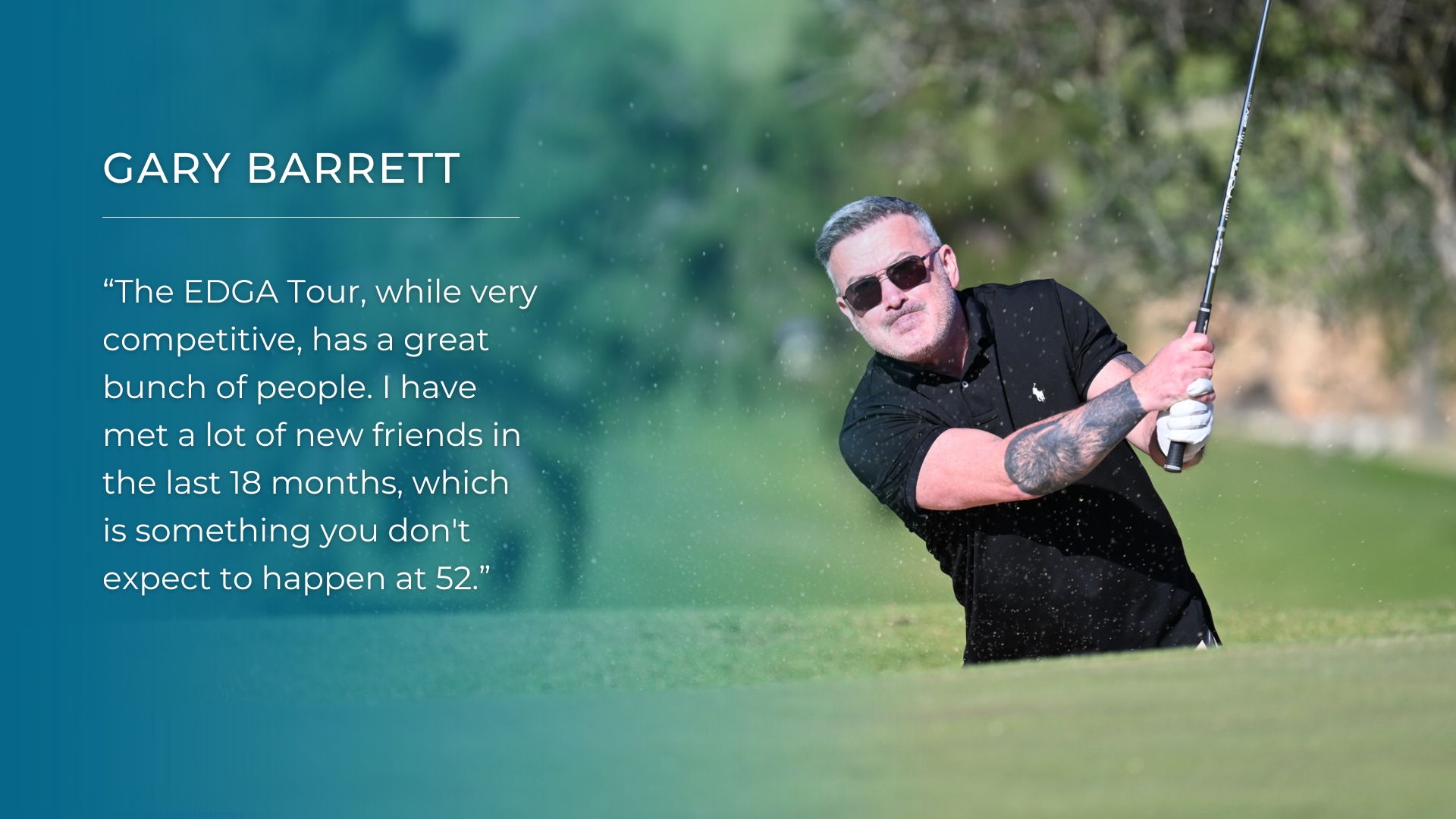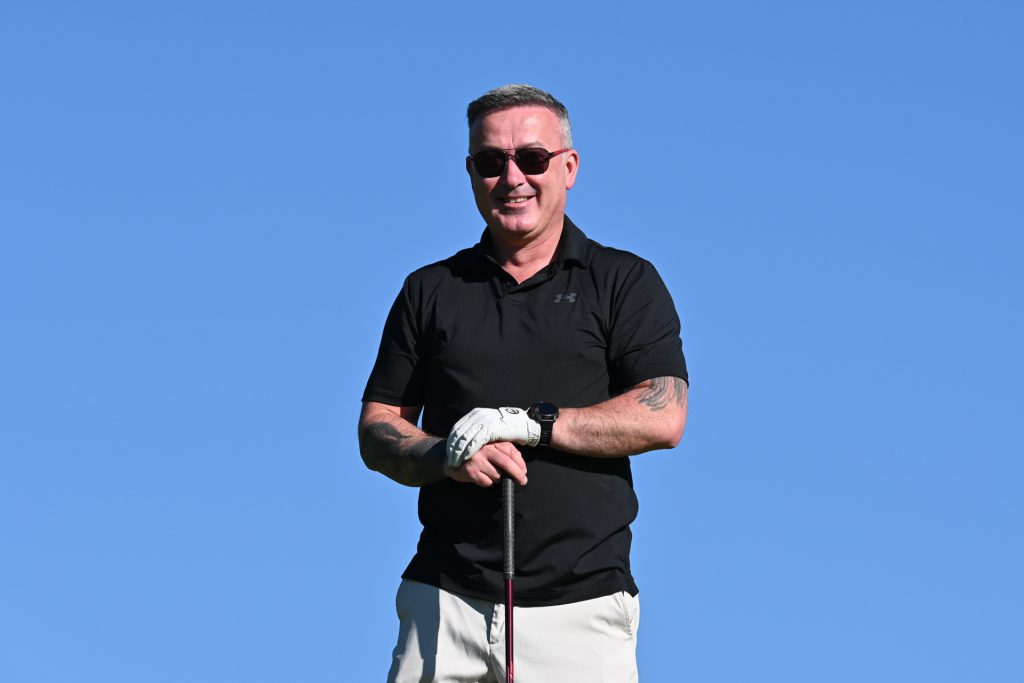
“I’m so thankful that my wife had the idea. I only started playing golf again 18 months or so ago when Jill bought a set of clubs for my 50th birthday.”
Gary Barrett smiles and shakes his head thinking of Jill’s foresight.
“I have spent my whole life rushing around, trying to advance my career. Golf has helped me slow down again.”
Gary will tell you he is thankful to many people, from back in his late teens with the business with his leg, to even before that.
The birthday present has offered a new hobby that is turning into a great accompaniment to his career as a wedding photographer in Ireland. His work places him in often lavish surroundings, and he can now add to these the visual memories of the beautiful golf courses around his adopted city of Dublin, in the rest of Ireland, and further afield since starting to play G4D (golf for the disabled) international events.
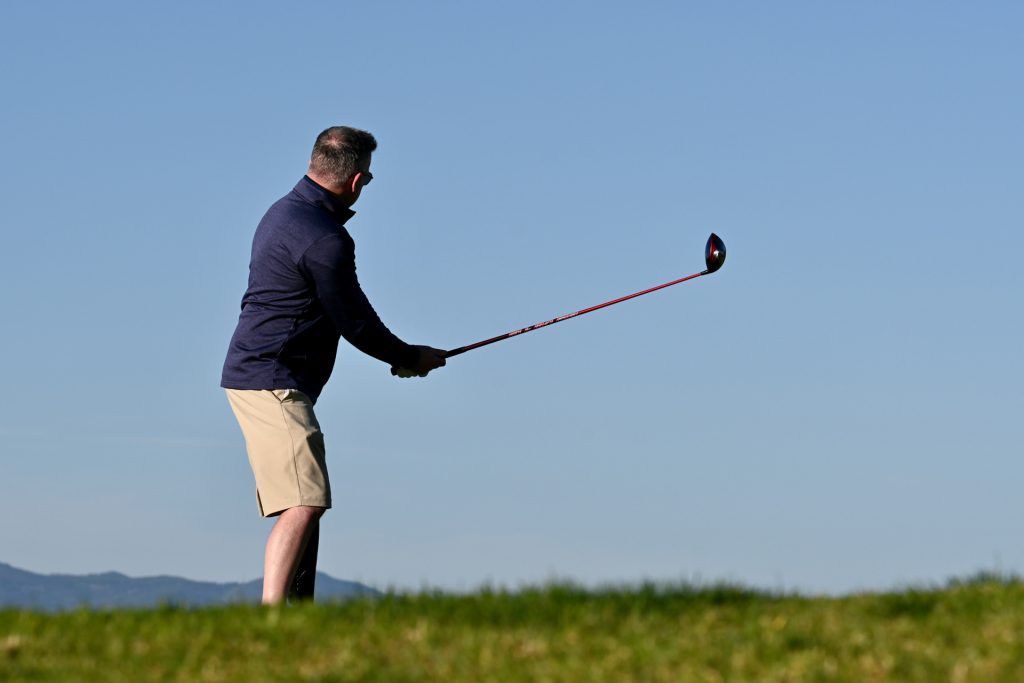
It wasn’t the first time he had been given some golf clubs. The gift from Jill also recalls happy childhood days before life changed.
While as a teenager his sports would become weightlifting (Uncle Paddy bought him dumbbells) and cycling, Gary remembers first trying golf aged 10 or 11, when the family moved to County Mayo in Ireland from Manchester, England.
The helpful youngster did odd jobs for a neighbour called Jim Carolan, who presented him with some old golf clubs he didn’t need and showed him the basics of how to hold and swing a club. Another neighbour, Keith Dalhousie, saw Gary playing with these clubs and cut them down to the right size for him and regripped them. A golfer was born.
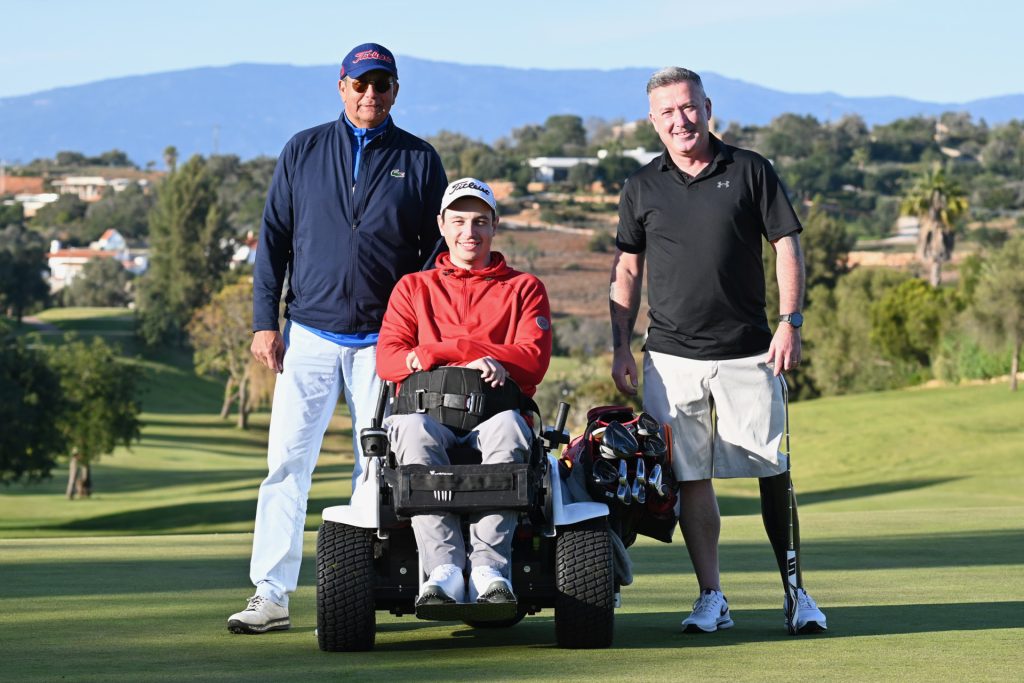
A few years later, Gary was diagnosed with osteosarcoma, a cancer in his left thigh bone.
He explains: “I was 17 when I was diagnosed, I had chemotherapy and a full 12-inch knee replacement, twice! The body started to reject the metal inside me at 18. At 19 I had a muscle transplant. It was an experimental operation to try and save the leg. They took muscle from my back and transplanted it to my thigh. It didn’t work, so I walked around on a walking stick, having multiple small operations, until at 22 I called up my orthopaedic surgeon Brian Hurson’s assistant, Margaret Cavanagh, and told her I wanted the leg off.”
Margaret would become “a great friend and support” to Gary and his family. When he made that urgent plea about his leg, Margaret, who had a sense of humour, replied matter-of-factly: “Today is Thursday, how does Tuesday-week suit?”
“I said ‘that’s sound’, and that was that. I have never looked back.”
Courage that surely masked, for a young man who was just setting out in life, the anguish he and his family must have felt at the time, but today Gary says his whole family was so positive, as was he himself, never for a moment letting negative thinking cloud his judgement.
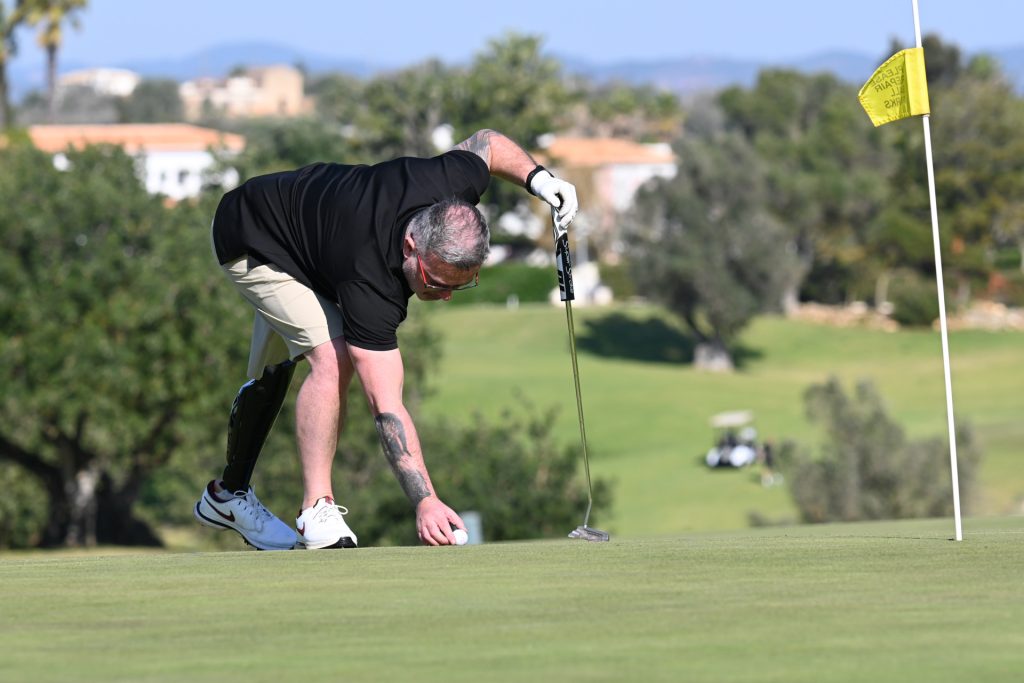
“That never entered my head,” asserts Gary. “Staying positive is the only way anyone survives cancer. During and after my treatment I never stopped trying to exercise, lift weights, and to cycle. My motto at the time was ‘if you rest you rust’.”
He adds: “Growing up in Mayo with all my family and relatives around me certainly helped. There was always someone visiting me in hospital to lift my spirits. Everyone was brilliant, including my friends at that time.”
It is fair to say that following surgery and rehabilitation Gary embraced life and though he had to dampen down his sporting ambition to be a weightlifting coach he soon threw himself into setting up what would become over 30 years one of Ireland’s leading and award winning wedding photography businesses, all with the support of Jill, who later married Gary and works alongside him to this day.
Ironically perhaps, his first professional photo assignment was for the local golf club at Mulranny, taking shots of the prize winners on Captain’s Day in 1994. Gary’s first wedding commission was the following year.
“It was my surgeon Brian Hurson who actually got me into photography,” Gary explains. “I once told him that I wanted to own my own gym and be a weightlifting instructor. He said harshly, ‘You need a new hobby, no one will hire a one legged weightlifter’. It was 1992, you could get away with talking like that back then. However, I changed direction because of the advice and the rest is history.”
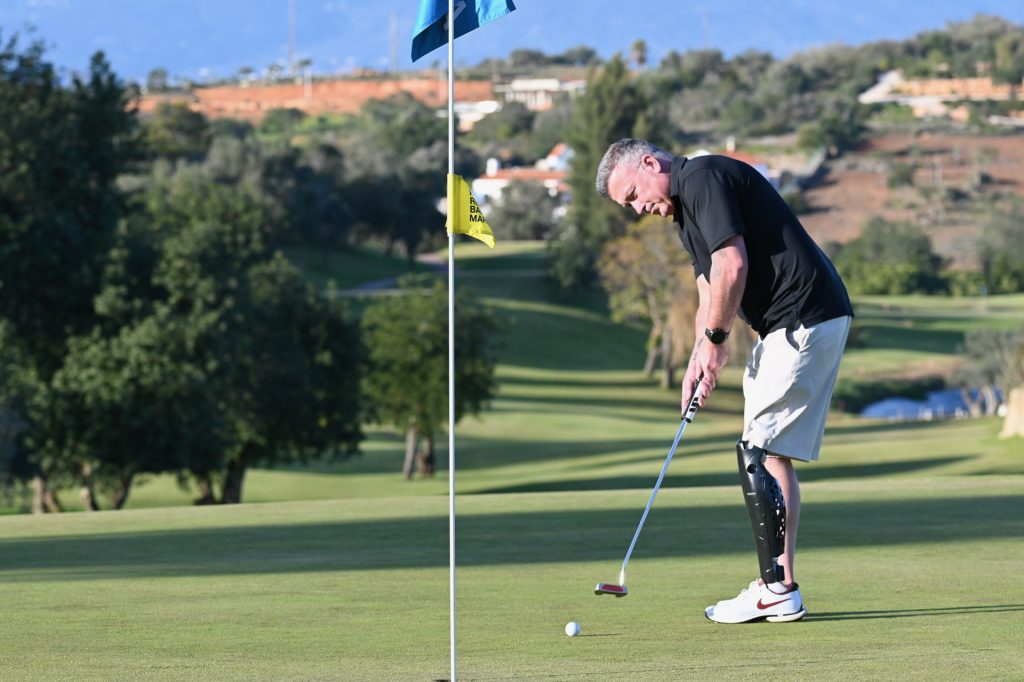
He would stay fit by doing the weights in the gym and also rowing. Today, running a business is time consuming, and wedding photography takes up many hours, from the long 12 to 21-hour days of set-up and photographing the occasion to the hours in the editing suite creating those picture-perfect images. But on non-wedding days Gary does experience flexibility, and here he is now being gripped by his return to golf.
“I love nothing more than jumping into a golf buggy and starting a round of golf at 7:45am before everybody else has even put their golf shoes on.
“Golf helps me get outdoors. If I didn’t have it I would be stuck in the office all day. At that time the course is empty. The deer are roaming the course, it is a wonderful time. It clears the head better than anything else.
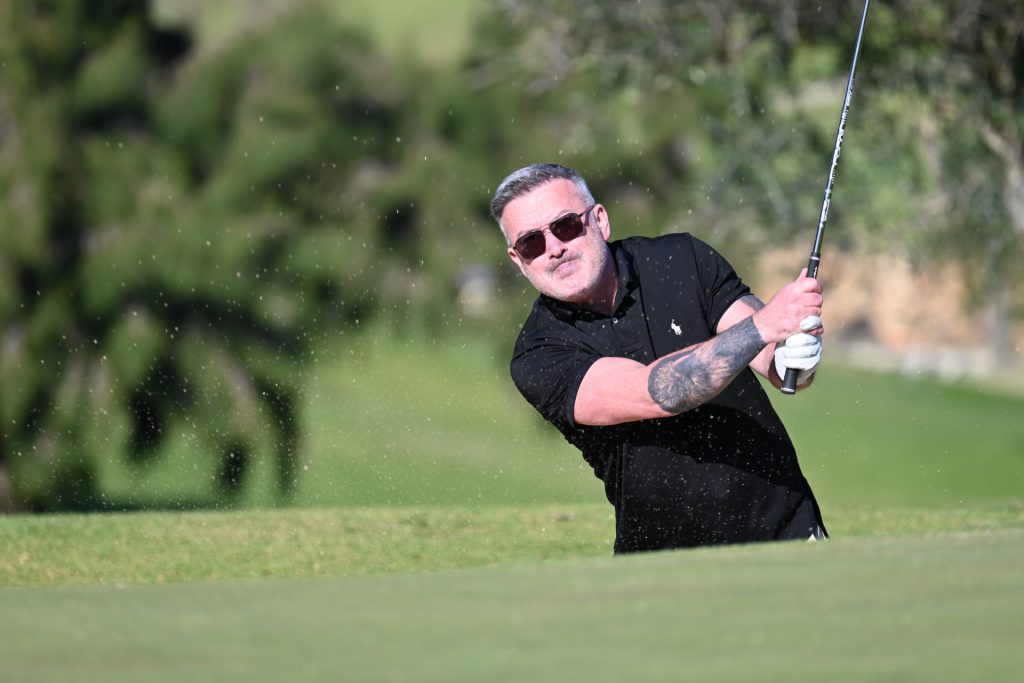
“I have recently joined Rathfarnham Golf Club. It is a stunning location at the base of the Dublin mountains and I love playing there.”
Gary adds: “Golf and photography can be quite similar in the sense that it takes all your focus. There is no room for outside thoughts or pressure to enter your head when taking a golf, or a photography shot. When travelling to a wedding I drive along in complete silence, creating a time line, reminding myself exactly where all the shots will be taken. It is the same for golf competition. If you play without a plan you have no chance of winning.”
When Gary started playing again with his new clubs, he knew there was an Irish amputee football team, so he decided to Google ‘amputee golf’, and found EDGA and DIGA (The Disabled and Inclusive Golf Association, in Ireland).
He now thanks fellow G4D players and EDGA volunteers for their welcome and support in tournaments for golfers with a disability. He thanks also the engineers of his new prosthetic leg at the company Ottobock, a prosthetic which is helping in all the movements for his golf swing. These people have all helped a new player bridge the gap into competitive golf.
“Playing with others brings out the competitive side, which can be a little more stressful for a new player,” Gary adds.
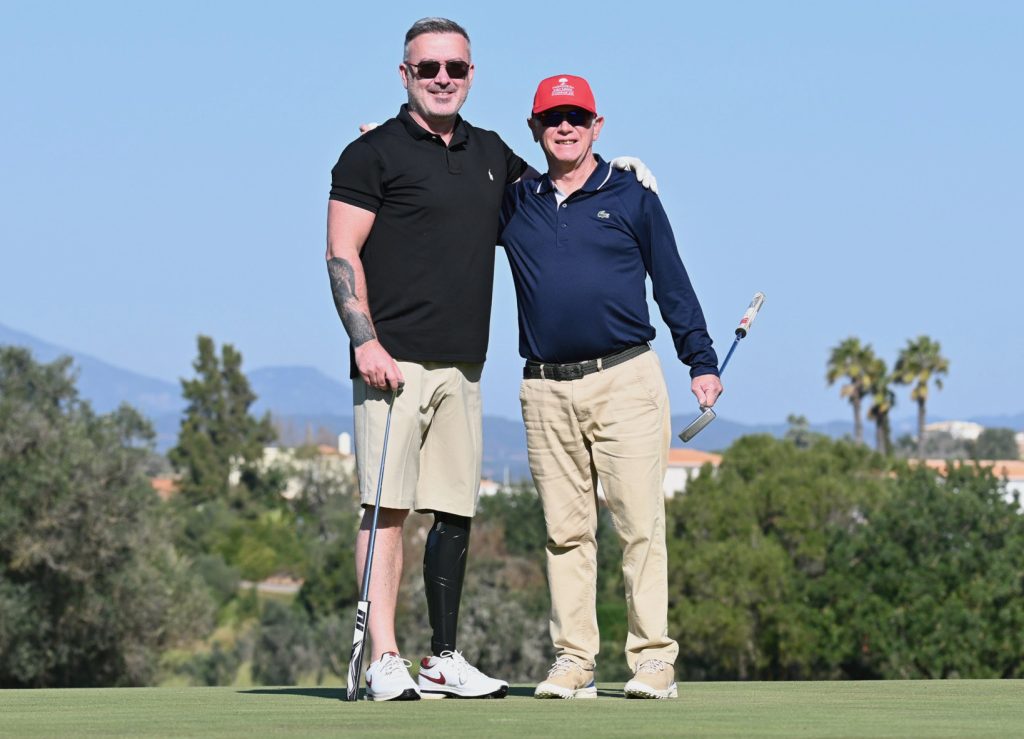
“Some of the people I have met at EDGA events have really helped my golf. I now play regularly with Mark Clougherty, who has really helped my game and I have told him on numerous occasions that he needs to become a golf coach, because of all the good lessons I have had from him. The EDGA Tour, while very competitive, has a great bunch of people. I have met a lot of new friends in the last 18 months, which is something you don’t expect to happen at 52.”
Gary continues: “Kevin Cassidy is another great golfer who has given me simple tips, to slow my game down, and help me focus on the next shot. Emma Brannigan, from Ottobock, has created a new prosthetic for me that has improved my game immensely.
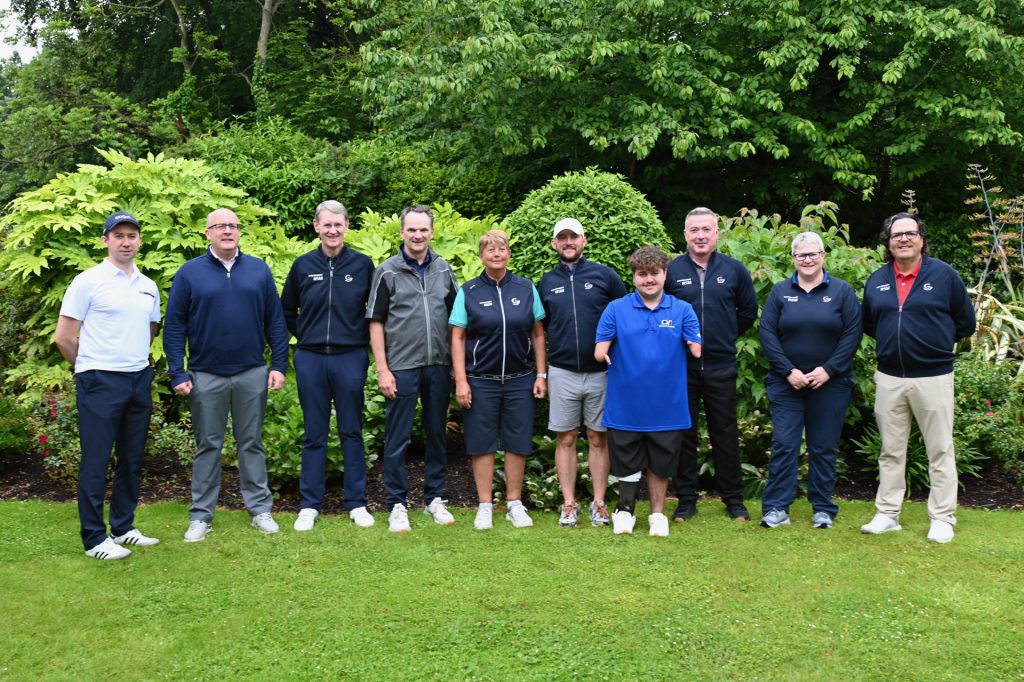
The organisation DIGA also deserves great praise for all the events they host in Ireland. It is a great way to get back into the game, and learn how competitive golf works, but with a more social feel.”
We said hello to Gary at the EDGA Tour Portugal Swing Pinta, one of back-to-back tournaments he played in January 2025 in the Algarve. In his first round he played with Italian golfer Giulia Marabotti. Gary told us how nervous he had been before the tournament started, but his nerves were calmed by Giulia, who gave him a golf ball bearing the Italian flag for luck. Giulia went on to win the Stableford tournament.
In turn, the golfing gods smiled on Gary as he secured fourth place in the Stableford section of the ISPS HANDA Irish Open in Roganstown in June, and later that month he finished third in the Stableford of the English Open for Golfers with a Disability at Ramside Hall Golf Club in Durham.
Between these two tournaments he was invited, along with other Irish G4D players, to compete in a celebratory golf day also at Roganstown, hosted by a key supporter of G4D and EDGA, the international audit, tax and consultancy firm RSM – an invitation Gary labelled “a great honour”.
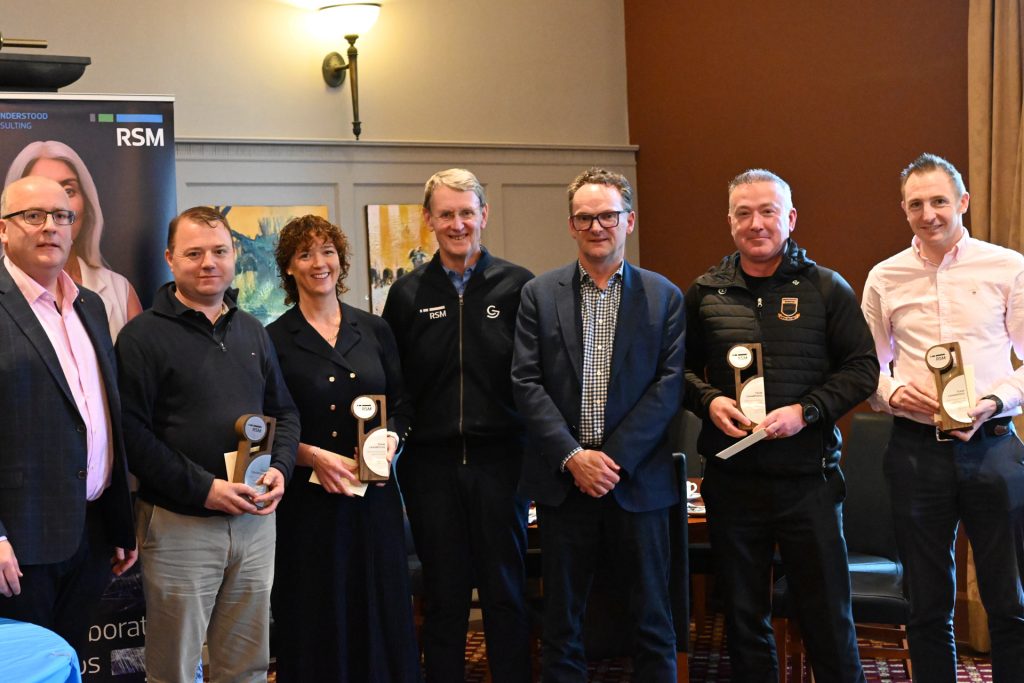
With these positive competitive experiences to go along with his appreciation of the game, and how it helps him in his physical and mental outlook, it suggests Gary is now a golfer for keeps.
He says: “I was never one for feeling sorry for myself, as I know there is always someone worse off. If you know someone who is stuck in a rut, disabled or not, I recommend they attend a round of golf at one of the EDGA or DIGA events. Even if they don’t play on the day, they can chat with people who will steer them on the right path. And by getting out of the house and meeting new people, new opportunities arise, and before you know it, the rut that you were in will be a distant memory.”
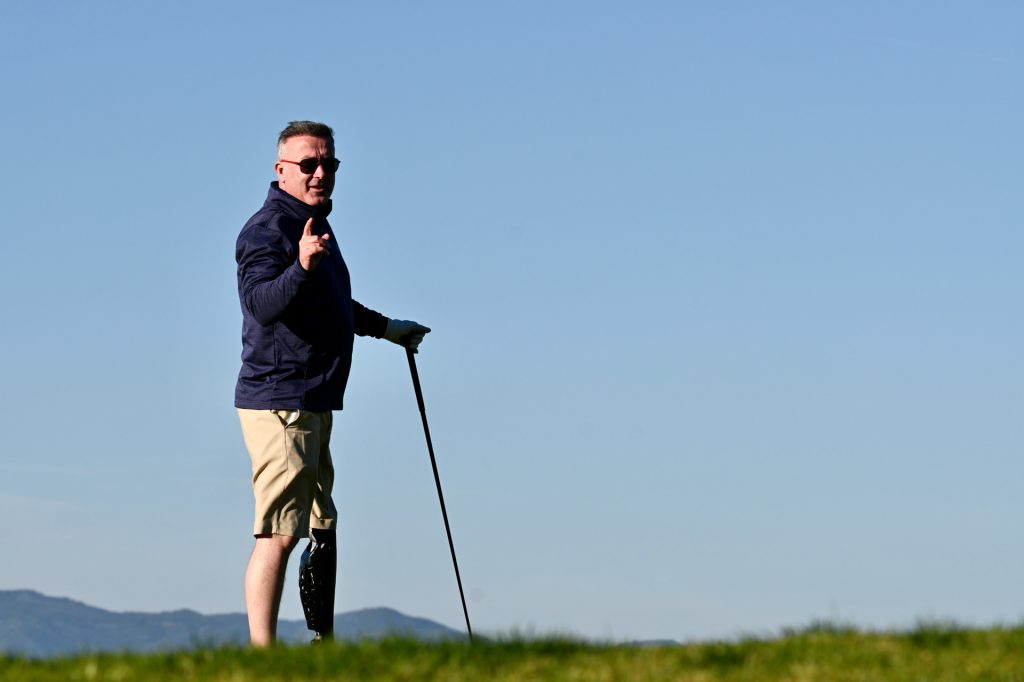
A constant in our interview was Gary’s habit of offering thanks to the people who have helped him, from his neighbours as a boy Jim and Keith onwards, but a key name he mentioned again was Margaret Cavanagh, the surgeon’s assistant, who booked Gary in for surgery with wry humour to make things easier so he would “never look back”.
Gary says: “Margaret Cavanagh was a great friend and support to me and my family during treatment, and afterwards. She was even at our wedding. She helped hundreds if not thousands of bone cancer patients in her career. She even visited us all in different hospitals, in her own time, if we were moved for treatments. She sadly passed away last year just before she could retire.”
Many golfers who have a disability and who are enjoying their golf today say they have someone who works in the health services, often in a white coat or a nurse’s uniform, to whom they feel they owe a debt. But of course they are actually paying that debt, by thriving in the game and in life, while encouraging others to join in so they too can enjoy feeling good on a golf course.
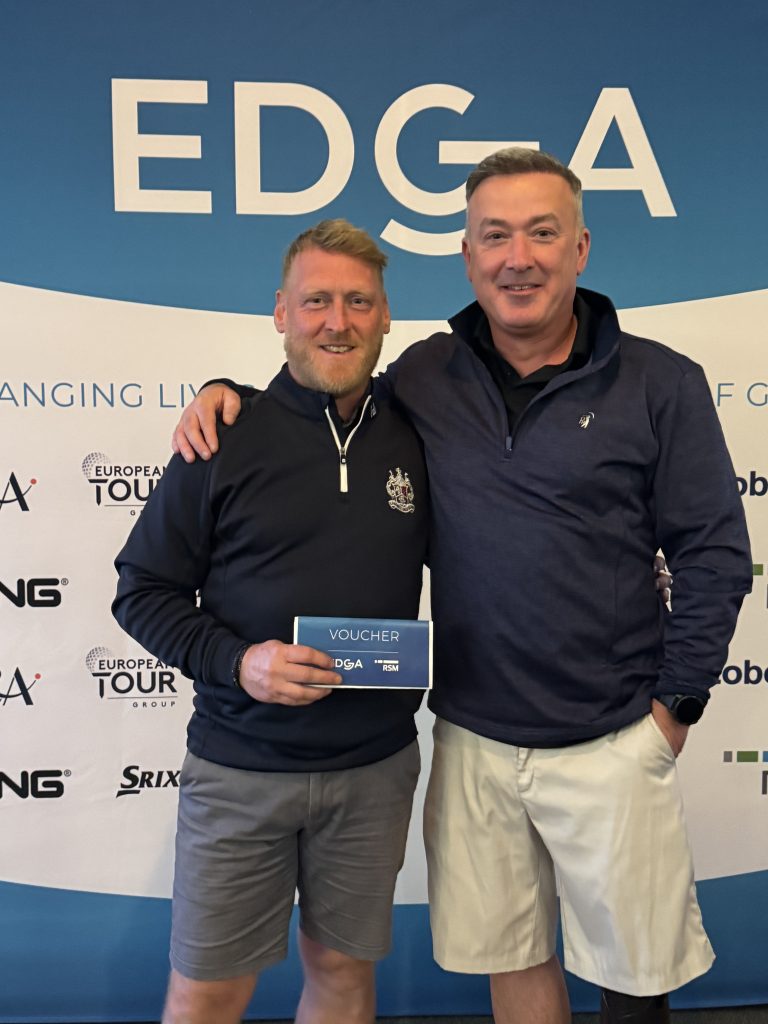
NB: When using any EDGA media, please comply with our copyright conditions


